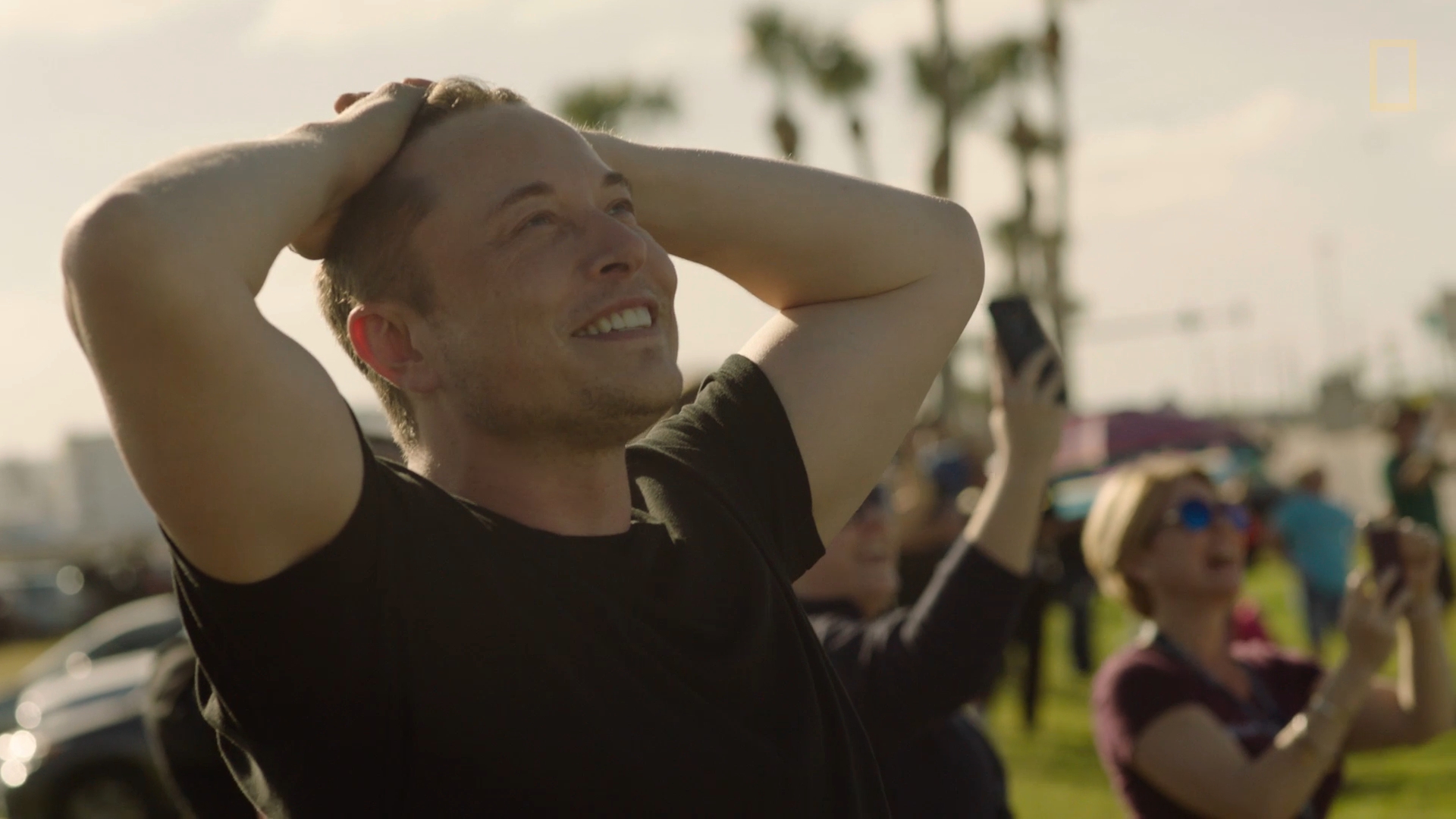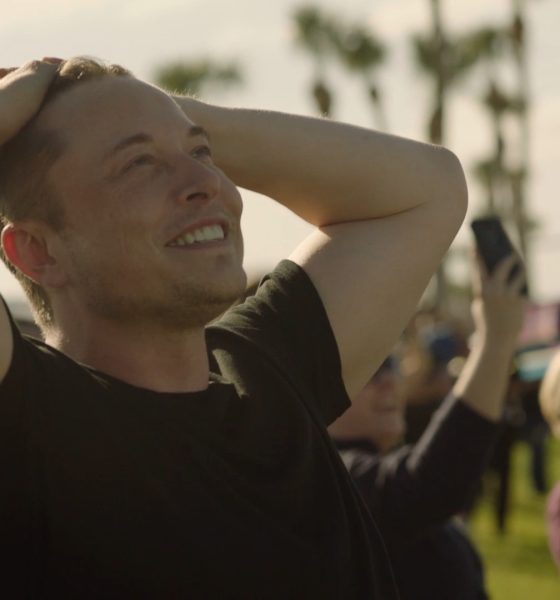

News
Elon Musk voted by SpaceX and Tesla employees as one of 2018’s Best CEOs
It is no secret that the past 12 months have been particularly difficult for Elon Musk. While his companies experienced milestones such as the maiden flight of the Falcon Heavy and the ramp of the Tesla Model 3, he has nonetheless courted numerous controversies. Yet, despite all the drama surrounding Musk, Tesla and SpaceX employees have nevertheless voted him as one of the best CEOs of 2018.
Workplace culture and compensation monitoring website Comparably recently published the results of its 2018 Best CEO Awards. The website’s awards are determined from sentiment ratings provided by employees, who anonymously rated their employers on the Comparably.com website. The site’s surveys were conducted between November 26, 2017 and November 26, 2018, with the site compiling almost 10 million ratings from across 50,000 US-based companies this year.
Among the CEOs that were considered, SpaceX and Tesla CEO Elon Musk came out as No. 19 in the survey’s overall rankings. Musk, apart from GM CEO Mary Barra (who was No.49) were the only CEOs from the auto sector that made it to Comparably‘s list. Musk was also ranked as the 14th most sought-after tech CEO, among 29 chief executives that made it to the Top 50 rankings. Overall, Musk’s 19th overall and 14th in tech rank are quite impressive, particularly as he did not make it to the website’s rankings last year at all. That said, the majority of Elon Musk’s high ratings in Comparably‘s study came from workers at his private space venture.
Looking at the votes from Tesla and SpaceX employees, it was evident that Musk was ranked higher by his workers at SpaceX. On a scale of 0-100, SpaceX employees gave Musk an average score of 83. Those from Tesla, on the other hand, gave him a more conservative 77 out of 100. If Comparably‘s study only focused on Musk’s ratings from his Tesla employees, he would have missed a spot in Comparably‘s Top 50 Best CEOs list once more. In a way, though, Musk’s average rating from Tesla workers is actually pretty admirable, considering that the company had to pass through multiple tribulations over the past year due to the Model 3 ramp.
Part of Elon Musk’s high ratings among his employees is likely attributed to his personal style of leadership. During Tesla’s difficulties with the ramp of the Model X, Musk started sleeping on the Fremont factory’s floor so that he could “lead from the front lines.” He adopted the same strategy in the Model 3 ramp, particularly when the company was pushing its self-imposed manufacturing targets at the end of the second quarter. During this time, anecdotes from the Tesla community even indicated that when the company was setting up GA4 on the grounds of Fremont, Musk could be seen torquing bolts with his employees.
Musk is also never one to shy away from putting the risk onto himself. A report from The Information last month indicated that Musk is Tesla’s resident test mule for its Autopilot software. The publication noted that Musk’s personal vehicle is loaded with a pre-released “development build” of the driver-assist system, which allows the CEO to make the software as aggressive as possible. This has allowed Tesla to identify bugs in Autopilot before improvements are rolled out, though a member of the team has noted that this resulted in Musk finding himself in “situations that many of us wouldn’t want to be in.”
During his recent 60 Minutes segment, Elon Musk noted that Tesla’s workers are the unsung heroes of the Model 3 ramp. Musk also stated that during the most painful periods of the electric sedan’s production, he wanted to make sure that the difficulties he is experiencing are worse than the challenges being faced by his employees. He also defended his workers against the company’s critics.
“There’s been relentless criticism, relentless and outrageous and unfair. Because what actually happened here was an incredible American success story. All these people work their ass off day and night to make it happen. And they believe in the dream. And that’s the story that really should be told. I think there was like literally one week where I actually worked 120 hours and just didn’t leave the factory. I didn’t even go outside. I wanted to make it clear to the team. They needed to see that however hard it was for them, I would make it worse for me.”
Comparably‘s Top 50 Best CEOs of 2018 list could be accessed here.

News
Tesla FSD fleet is nearing 7 billion total miles, including 2.5 billion city miles
As can be seen on Tesla’s official FSD webpage, vehicles equipped with the system have now navigated over 6.99 billion miles.

Tesla’s Full Self-Driving (Supervised) fleet is closing in on almost 7 billion total miles driven, as per data posted by the company on its official FSD webpage.
These figures hint at the massive scale of data fueling Tesla’s rapid FSD improvements, which have been quite notable as of late.
FSD mileage milestones
As can be seen on Tesla’s official FSD webpage, vehicles equipped with the system have now navigated over 6.99 billion miles. Tesla owner and avid FSD tester Whole Mars Catalog also shared a screenshot indicating that from the nearly 7 billion miles traveled by the FSD fleet, more than 2.5 billion miles were driven inside cities.
City miles are particularly valuable for complex urban scenarios like unprotected turns, pedestrian interactions, and traffic lights. This is also the difference-maker for FSD, as only complex solutions, such as Waymo’s self-driving taxis, operate similarly on inner-city streets. And even then, incidents such as the San Francisco blackouts have proven challenging for sensor-rich vehicles like Waymos.
Tesla’s data edge
Tesla has a number of advantages in the autonomous vehicle sector, one of which is the size of its fleet and the number of vehicles training FSD on real-world roads. Tesla’s nearly 7 billion FSD miles then allow the company to roll out updates that make its vehicles behave like they are being driven by experienced drivers, even if they are operating on their own.
So notable are Tesla’s improvements to FSD that NVIDIA Director of Robotics Jim Fan, after experiencing FSD v14, noted that the system is the first AI that passes what he described as a “Physical Turing Test.”
“Despite knowing exactly how robot learning works, I still find it magical watching the steering wheel turn by itself. First it feels surreal, next it becomes routine. Then, like the smartphone, taking it away actively hurts. This is how humanity gets rewired and glued to god-like technologies,” Fan wrote in a post on X.
News
Tesla starts showing how FSD will change lives in Europe
Local officials tested the system on narrow country roads and were impressed by FSD’s smooth, human-like driving, with some calling the service a game-changer for everyday life in areas that are far from urban centers.

Tesla has launched Europe’s first public shuttle service using Full Self-Driving (Supervised) in the rural Eifelkreis Bitburg-Prüm region of Germany, demonstrating how the technology can restore independence and mobility for people who struggle with limited transport options.
Local officials tested the system on narrow country roads and were impressed by FSD’s smooth, human-like driving, with some calling the service a game-changer for everyday life in areas that are far from urban centers.
Officials see real impact on rural residents
Arzfeld Mayor Johannes Kuhl and District Administrator Andreas Kruppert personally tested the Tesla shuttle service. This allowed them to see just how well FSD navigated winding lanes and rural roads confidently. Kruppert said, “Autonomous driving sounds like science fiction to many, but we simply see here that it works totally well in rural regions too.” Kuhl, for his part, also noted that FSD “feels like a very experienced driver.”
The pilot complements the area’s “Citizen Bus” program, which provides on-demand rides for elderly residents who can no longer drive themselves. Tesla Europe shared a video of a demonstration of the service, highlighting how FSD gives people their freedom back, even in places where public transport is not as prevalent.
What the Ministry for Economic Affairs and Transport says
Rhineland-Palatinate’s Minister Daniela Schmitt supported the project, praising the collaboration that made this “first of its kind in Europe” possible. As per the ministry, the rural rollout for the service shows FSD’s potential beyond major cities, and it delivers tangible benefits like grocery runs, doctor visits, and social connections for isolated residents.
“Reliable and flexible mobility is especially vital in rural areas. With the launch of a shuttle service using self-driving vehicles (FSD supervised) by Tesla in the Eifelkreis Bitburg-Prüm, an innovative pilot project is now getting underway that complements local community bus services. It is the first project of its kind in Europe.
“The result is a real gain for rural mobility: greater accessibility, more flexibility and tangible benefits for everyday life. A strong signal for innovation, cooperation and future-oriented mobility beyond urban centers,” the ministry wrote in a LinkedIn post.
News
Tesla China quietly posts Robotaxi-related job listing
Tesla China is currently seeking a Low Voltage Electrical Engineer to work on circuit board design for the company’s autonomous vehicles.

Tesla has posted a new job listing in Shanghai explicitly tied to its Robotaxi program, fueling speculation that the company is preparing to launch its dedicated autonomous ride-hailing service in China.
As noted in the listing, Tesla China is currently seeking a Low Voltage Electrical Engineer to work on circuit board design for the company’s autonomous vehicles.
Robotaxi-specific role
The listing, which was shared on social media platform X by industry watcher @tslaming, suggested that Tesla China is looking to fill the role urgently. The job listing itself specifically mentions that the person hired for the role will be working on the Low Voltage Hardware team, which would design the circuit boards that would serve as the nervous system of the Robotaxi.
Key tasks for the role, as indicated in the job listing, include collaboration with PCB layout, firmware, mechanical, program management, and validation teams, among other responsibilities. The role is based in Shanghai.
China Robotaxi launch
China represents a massive potential market for robotaxis, with its dense urban centers and supportive policies in select cities. Tesla has limited permission to roll out FSD in the country, though despite this, its vehicles have been hailed as among the best in the market when it comes to autonomous features. So far, at least, it appears that China supports Tesla’s FSD and Robotaxi rollout.
This was hinted at in November, when Tesla brought the Cybercab to the 8th China International Import Expo (CIIE) in Shanghai, marking the first time that the autonomous two-seater was brought to the Asia-Pacific region. The vehicle, despite not having a release date in China, received a significant amount of interest among the event’s attendees.








